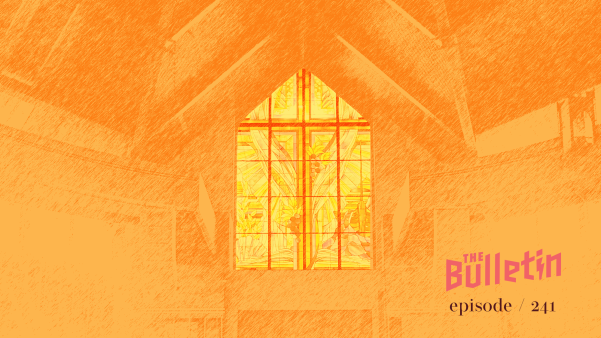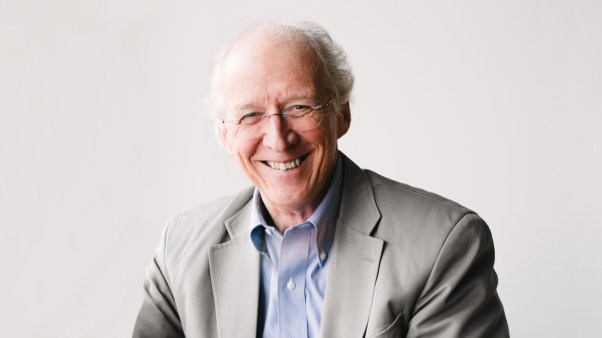A critical cash shortage caused by recent heavy purchases and problems with the Ohio Commerce Department is shaking the foundation of television preacher Rex Humbard’s conglomerate. The department’s securities commission recently issued restraining orders on Humbard’s sale of securities: because the securities were not registered properly, sales were technically illegal. Subsequently, several other mid-western states followed suit. (Ohio officials say more than $12 million was raised through the sales over the last ten years, though not all sales were illegal.)
Expenses were reportedly already exceeding the estimated current $8 million annual income of Humbard’s Cathedral of Tomorrow when the shutoff came. Of this amount, $2 million came from sale of securities and $6 million came from donations and commercial holdings. (Operational expenses are said to be $3 million, video $3 million, and mortgage and taxes $2 million. The telecasts on 360 stations in North America and forty elsewhere reportedly bring in $5 million annually in donations.)
After income from securities dried up, an ex-Humbard aide estimated the cash flow was down to $100,000 per week, half that required to stay afloat. Reserves were being bled off to pay for a television tower, a college, a commercial office complex in downtown Akron (in which Humbard reportedly loses nearly $25,000 per month), and other business projects (see October 8, 1971, issue, page 42). As a result, Humbard has been forced to cut back. For example, the annual Cathedral of Tomorrow New Year’s Eve Special was canceled in some cities, and the weekly television show may be moved to cheaper time slots.
Even though Humbard has been selling securities illegally for ten years (the state cited four violations during that time), securities commission director Dennis Shaul says he is not out to topple the cathedral and force it out of business. He and commissioners from several states met recently to discuss the situation, and his staff conferred with Humbard officials to work out a compromise allowing the sales to proceed legally. Unlike some states, Ohio does not distinguish between se-securities sold by businesses and those by non-profit organizations.
The commission got into the act in an effort to protect investors “whether they want protection or not,” said an official. Humbard argues that his investors see their investment as a donation and are not worried about their money so long as it is used to spread the Gospel.
In the interim, say sources at the cathedral, many investors are increasing donations to take up the slack. Cathedral officials also said none of the weekly TV programs shown across North America would be cut by the cash shortage. To help pay for the programs, the church mortgage was raised to $6.7 million in the last year. Humbard is also reported to have IOU’s out on some of the annuities he has sold.
According to a Religious News Service story, Humbard has been shuffling mortgages to keep afloat. A $5 million mortgage from Akron National Bank and Trust was taken in August, 1971, and repaid in December. The next day a Chicago pension fund granted him a $5.6 million loan, partly to consolidate earlier loans totaling $4.1 million. M. W. Kellogg, the contracting firm on the television tower (construction has stopped on the 705-foot television-restaurant complex), also took a $250,000 mortgage in December, 1971, and less than a month later a $300,000 mortgage by Northern Ohio Bank of Cleveland was paid off. The loan originated in September, 1971. Northern Ohio Bank later took out an $800,000 mortgage. In all, nine mortgage transactions in sixteen months are listed for the cathedral at the local courthouse.
Much of the cash reserve of the church was used to purchase property on frigid, wind-swept Mackinac Island in Lake Michigan and open a college. (The college facility, once owned by Moral Re-Armament, was turned down by evangelist David Wilkerson and anti-Communist crusader Billy James Hargis, among others. One wag says even the Icelandic Lutherans turned it down.) The winterbound college currently has 136 students, far below a break-even enrollment.
In the face of his present problems, Humbard is trying to decide whether to shed a New York girdle factory and other properties. His total holdings across the country are valued in excess of $30 million.
To add to his financial headaches, Humbard’s wife, gospel singer Maude Aimee, recently got him to purchase a house at a cost of $250,000. The house is a former industrialist’s mansion located among the rubber barons in Akron’s posh west end. The former parsonage was torn down to provide extra parking—one of several demands used by local authorities to halt construction of the TV tower.










